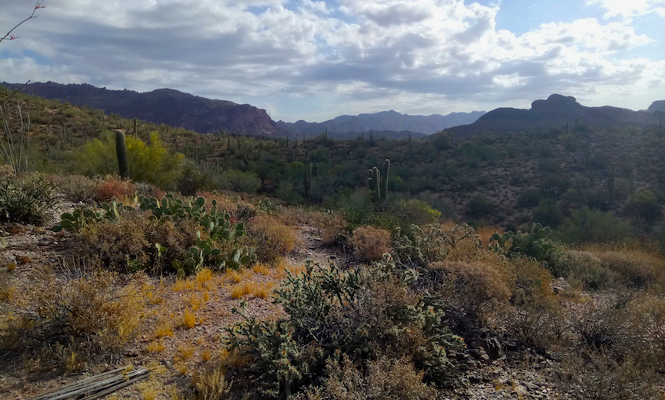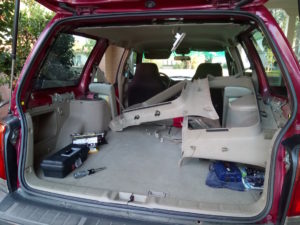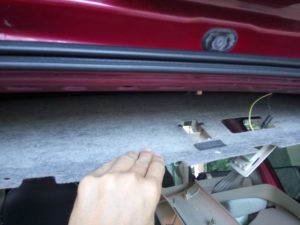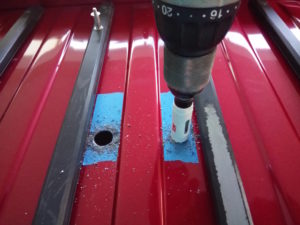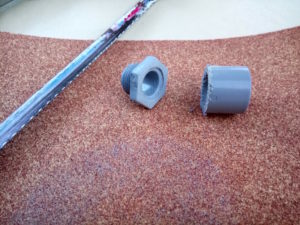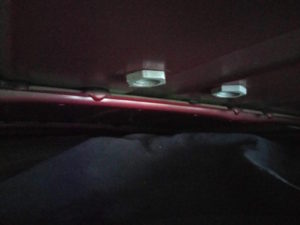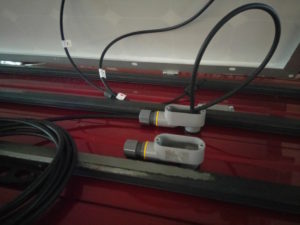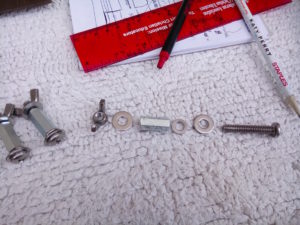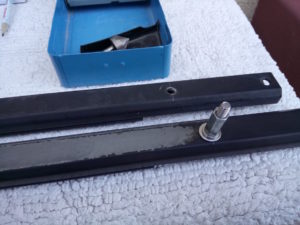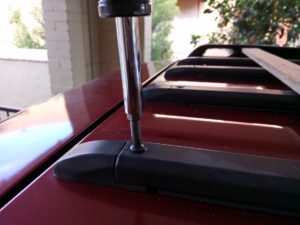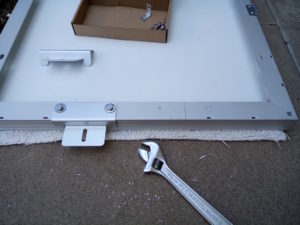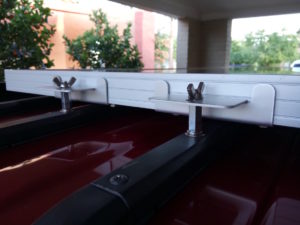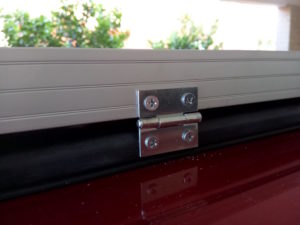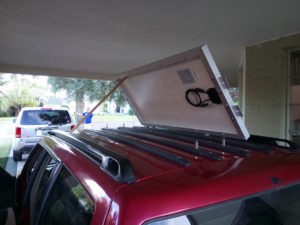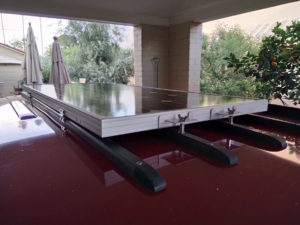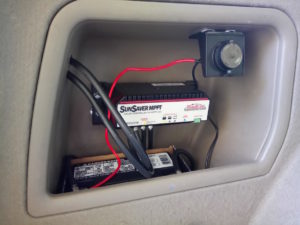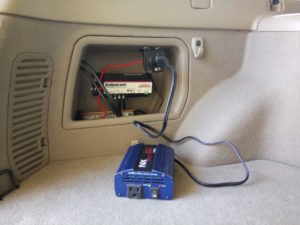Postcard from Mars – a SIMOC update: August 01, 2017
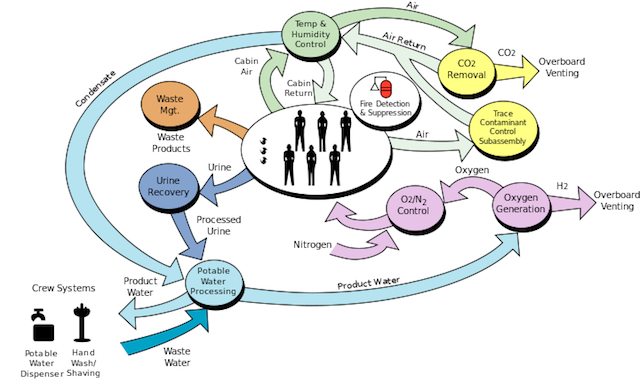
ECLSS
An Environmental Control and Life Support System (ECLSS) enables humans to survive in a semi-open (Fig 1) completely closed (BioSphere II, Lunar Palace) ecosystem. In a traditional model, all components vital to sustaining life are tracked by a network of system monitors. Careful estimations are made for the quantity of humans in the given environment for a particular period of time, against the resources provided. The amount of work they perform, the food they consume, and the number of hours they sleep all affect the duration and quality of the mission (see Wikipedia commons image, above).
In this linear tabulation of resource allocation and consumption each human actor or agent is treated as an IN and OUT box, a system which transforms one resource of a particular quantity into a bi-product which is either reused or discarded as waste.
To use this model for a massively scalable system (4-40,000 people) will result in an arduous, ultimately failing bookkeeping effort of tracking values such as the quantity of molecules of oxygen, carbon dioxide, water, calories, Watts or Joules. Through this linear method, we will be less likely to discover causality. If instead we can build a model which considers the relationship between two or more systems, which are themselves maintained by a constant input of energy and mass flow against the natural progression toward system breakdown, then we will gain a better sense of what it means to scale a human colony in a totally foreign, inhospitable environment, from the first astronauts to arrive to a genetically viable human gene pool that can, of its own accord, carry the human species forward.
A rendezvous with Rama
In our imagination, humans in a distant future have gained the ability to travel vast distances in relatively short periods of time. An exploratory mission discovers a massive, abandoned space station in orbit about a planet which itself is not conducive to life as we know it. We attach a shuttle craft to the hull of the outpost, tens of kilometers in diameter, and let ourselves inside. There does not appear to be a single living creature inside. Nothing moves, not even automated repair and management systems.
Immediately, we ask, For how long has this outpost been abandoned?
To answer that question, we determine if the atmosphere is breathable for humans, and we remove our helmets. The air is dry, cold, and devoid of the smell of decay. There is an odor of machine oil and mechanical systems.
While completely sealed, and safely parked in a non-decaying orbit far above the drag of the atmosphere, this habitat is decaying. It is slowly degrading. No matter how well crafted, no matter how perfectly every nut, bolt, and weld is applied, eventually this artificial world will fall to pieces.
You can point to the systems which are no longer being maintained: water delivery, sewage removal, atmosphere recycling systems. The ship’s hull is continuously bombarded with radiation from the binary star system 1.5 AU from the orbit of the host planet. Each of these is breaking down due to a lack of maintenance.
As we explore the inner halls and chambers of this orbiting world we take note of the integrity of the structure. Are seals in tact? Are lubricants leaking? Do the doorways to passages open and close securely? Do motors yet spin and pistons yet pump? Or have all moving parts seized and become immobile?
While we tend to measure breakdown over time, we can also measure the disorganization of the structure, at the macroscopic and microscopic levels. Physical breakdown of a mechanical system can be described as a degree of current functionality in comparison to its original design parameters. In this alien outpost, despite the incredible technology employed, we do recognize the failure of some systems (once rebooted and encouraged to operate again), such that we are able to estimate their original function and design specification. The difference between full capacity and the current state is a ratio which can be described as a normalized function, from zero through one [0 … 1] where 1 is complete, working order and 0 is a seized, non-functioning machine, no longer providing the intended service, and thereby no longer supporting this habitat nor the inhabitants who once occupied it.
This breakdown, the unavoidable decline of all bounded systems can be described by the single variable entropy, or the measure of organization.
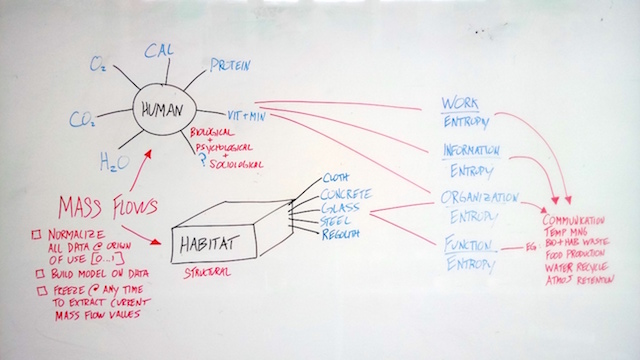
So let’s take a few steps back, to a time when the alien station was yet inhabited. We can safely assume that at that time there was a maintenance schedule, a system by which the entire structure was maintained through routine inspection, repair, and replacement. This could have been done by the macroscopic hands of the aliens (who appear to be of a similar stature to that of the human explorers), an automated array of robotic assistants, or by microscopic nanobots whose function is to maintain the integrity of all functional systems, at all times, such that no weaknesses ever develop, and no systems ever suffer from catastrophic failure.
Either way, there is a cost to this maintenance, the work (w), or energy expenditure and mass flow to maintain the function (f) of the habitat. Organization (o) of this work requires management of information (i). As such, we have defined a means by which we can measure the status of a closed ecosystem:
- Organization
- Information
- Work
Function, then, is a relationship between the Organization, Information, and Work attributed to the sustained management of the habitat, or its total functionality. While each of these could be measured in any of number methods, we will place each in a tightly bound relationship to entropy, such that entropy is the counterpart, the undoing of organization, information, work, and ultimately the function.
Now, we have a new means of monitoring the health of the physical parameters of an isolated habitat, as:
Where the ratio is a measure of the effort or energy required to ultimately maintain a self-contained ecosystem without ever having had to count the molecules of oxygen, water, or complex carbohydrates. In a newly built habitat, the entropy is low, therefore the maintenance is low as well. But as the habitat ages, or if catastrophe strikes, the entropy will be large, thereby requiring greater organization, information, and work to bring it back into compliance with sustaining human life.
We are relating the current state of the system to its design specification over the inevitable force of entropy.
Back to Mars
If we employ a normalized set of values, as discussed above, then the maths is quite simple, even as we scale this colony from 4 to 400 to 40,000 individual habitants. This is not to say we will not count molecules nor worry ourselves with the atmospheric pressure in the greenhouse, for our model is in fact based on data accumulated from close-ecosystem and bioregenerative experiments on Earth. But to find those non-linear functions of scalability, we must remove ourselves from the line-item bookkeeping which would otherwise overlook the economies of scale which will surely affect a growing colony.
The habitat itself is designed to sustain human life in an otherwise inhospitable environment. As such, we can model the human lives of the astronauts by making certain the habitat itself is functional. We have established a potential framework built upon four parameters which enable us, at any point in the run-time of our SIMOC model, determine the relatively “health” of the physical structure of the habitat.
Now, let’s turn our attention to the health of the human habitants for which the habitat was designed and built Like a structure which is built from concrete, steel, glass, and soil, humans are composed of building blocks. Water, oxygen, calories, protein, vitamins and minerals make up the fluid and solid systems of our bodies.
How do we bring such discreet elements into the SIMOC model without managing each and every molecule that supports the lives of the human inhabitants of the isolated colony? In much the same way as we did with the habitat, we can look at the construct of the human body, and what breaks down over time.
One can see the human body as an assembly of points of failure, critical systems which must be satisfied. Oxygen intake, carbon dioxide exhalation, water, calories, nutrition, and waste management are as mission critical to the human body as is a sealed, pressurized shell to a habitat.
If we see humans as the caretakers of the habitat, that is, the principal labor force responsible for its anti-entropic upkeep, and the habitat as the physical construct which enables the humans to survive in outer space, or on a remote planet, then we have created a positive feedback loop in which each unit supports the other.
What happens when automated or directed robot labor replaces the human maintenance engineer? The labor is shifted from one entity to another, but the total work required to maintain the habitat is sustained, and the total quantity of humans supported, given the immediate infrastructure is not changed. Rather, the caloric expenditure of each human in the habitat is shifted to other functions, and the economy of scale is realized.

